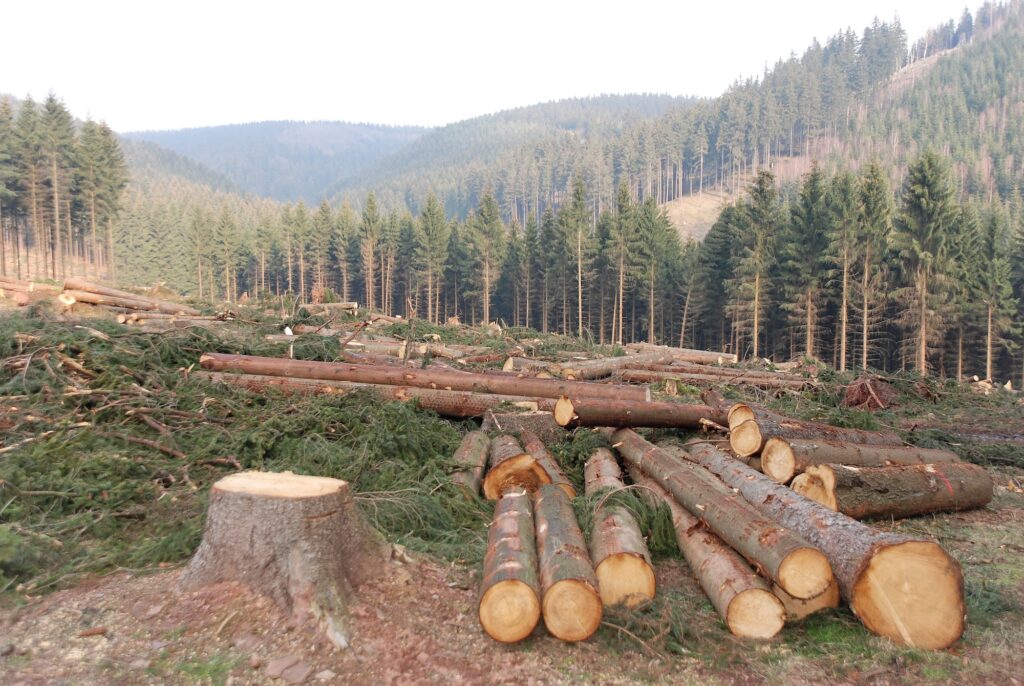This week the government lifted the logging ban, allowing for the harvesting of some trees in our forests. Away from the heated debates, this development has triggered a question in my mind- just how valuable is a tree? Well, trees indeed have multiple values, but my mind has been focusing on a singular one, their priceless value. One large tree can supply up to four people with oxygen for a day, the older the tree the more oxygen it releases. As such, trees essentially breathe life into us. They keep us alive. We should never forget this.
Trees also provide us with the timber that is used extensively in making furniture and in the construction sector. According to the Forestry and Logging Global Market Report 2023, the global forestry and logging market is worth USD1 Trillion! So lucrative is this sector that as per data from Interpol, the illegal timber industry is worth a staggering USD 152 billion per year.
Sadly, these stratospheric figures have pushed many to perceive trees merely as a source of timber dollars. But as we have already established, trees breathe life into humans by providing oxygen.
Accordingly, every fully grown tree matters. Not only does it provide oxygen, it also absorbs more than 21 kilos of carbon dioxide from the atmosphere. You cannot put a price tag on that ecosystem service! Notably, our total protected Government Forest area strictly under the care of Kenya Forest Services (KFS) is a paltry 2 percent. KFS is of course doing tremendous work with community forest conservation efforts.
I am therefore greatly encouraged that Kenya has committed to planting 15.7 billion trees by 2032 to reach a 30 per cent of tree cover. Our President as a green champion led from the front when he planted 56 trees on 22nd December, 2022 to mark his 56th birthday.
Yet our 30 percent target still falls short of the more 50 per cent cover in at least 15 African countries. In fact, the Equatorial Guinea, Gabon, Guinea Bissau, Liberia and Seychelles, exceed 70 percent forest cover! Our 2032 thirty percent target should therefore be a mere starting point.
There is yet another value of forests — the non-timber forest products, which are themselves a billion-dollar industry.
According to the Kenya Forestry Research Institute, globally, non-timber forests products are worth USD115.5 to USD117 billion annually. Unlike timber, whose value ends after a tree is cut down and sold, non-timber products are self-replenishing! In other words, that USD117 billion isn’t a one-off revenue but a consistent revenue.
For example, according IMARC latest report, the annual global honey market is expected to reach USD 12.2 billion by 2028. It takes about four months to produce honey. If Kenya drastically steps up its honey production by taking advantage of our forests, then in the long run we will earn substantially more money from honey than timber. Other lucrative non-timber forest products include mushrooms whose global market is expected to grow to USD 85 billion by 2026 according to CAGR. Further, the global herbal medicine market on the other hand is estimated to rise from the current USD 200 billion to USD 284 billion in 2028. Forest adjacent communities in places like Elburgon, Mt kenya regions, Mau and Kakamega can earn much more money from non-timber forest products than from timber. Moreover, such products are better tailored for smaller producers.
We must therefore do everything possible to increase our forest cover instead of decreasing it.
The circumstances that informed the ban on logging in 2018 are still valid today even as effects of climate change put more pressure on livelihoods cost of living. Further the 26 powerful recommendations made by the honorable 2018 taskforce on Forest Recourses Management and logging activities are yet to be implemented. We are greater and safer keeping our hands off our forests. If we can import maize and sugar, why not import timber as we increase our forest cover? Think green, act green!



